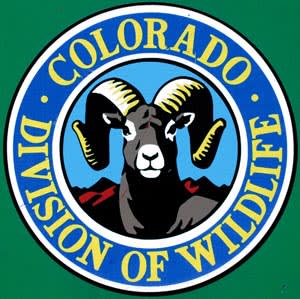Holiday Decorating in Colorado with Wildlife in Mind
OutdoorHub 11.21.11

Denver, Colo. — With the holiday season rapidly approaching, Colorado Parks and Wildlife asks citizens to keep wildlife in mind as they decorate outside their homes.
Outdoor lighting and decorations can pose serious hazards to wildlife, especially deer and elk. And, unfortunately, not a year goes by without wildlife officers being called to rescue animals caught in wired lights or decorations stuck on animals’ horns, antlers, heads or legs. Most of these incidents can be prevented by following a few simple tips on where and how to use decorations.
RECOMMENDATIONS
- Wait to put up outdoor lights on posts, shrubs or small trees until after the peak of the deer rut, sometime after the first week of December.
- Trees with trunk diameters of two to six inches are most likely to be rubbed by bucks which entangle lights in their antlers –only string lights on larger diameter trees.
- Use multiple short strands of wire plugged together versus one long strand so that if animals become entangled they will have less cord to deal with.
- Avoid stringing lights “clothesline” style across areas — firmly attach lights to tree limbs, gutters, or fence posts.
- Place flagging along the wired decorations so that deer can see where the wire is and avoid entanglement.
These ideas can also apply to general yard planning year-round. Wildlife can also benefit from:
- Removing volleyball nets from their posts during the winter– don’t wrap nets around the post, as animals may still be enticed to rub their antlers on it and become entangled.
- Disconnecting and storing water hoses, tomato cages and other garden materials (netting, stakes, ties, etc.) until spring.
- Taking down and storing hammocks and swings when not in use.
- Flagging or removing empty clotheslines until they are needed.
- Fencing yards with animals in mind, as illustrated at: http://wildlife.state.co.us/SiteCollectionDocuments/DOW/LandWater/PrivateLandPrograms/DOWFencingWithWildlifeInMind.pdf
WHEN TO INTERVENE
“One of the greatest hazards to an entangled animal can be a well-meaning citizen who comes too close,” said Casey Westbrook, district t wildlife manager for northeast Elbert County “People should not approach or try to help an entangled animal. Greater injury to the animal or injury to the person may result. Precaution is the preferred tool to problem-solving.”
Colorado Parks and Wildlife is often called to remove objects from wildlife. However, it’s important for the public to understand that capturing and handling animals can be very stressful to them and can result in animal mortality.
Because of this, Colorado Parks and Wildlife generally does not remove objects from animals unless the object is impeding the animal’s movement, has completely blocked the animal’s vision, or is around the animal’s jaw, neck or chest where constriction will affect survival. In the case of deer and elk with wire or other non-life threatening materials on the antlers, the problem usually comes in mid-winter when antlers are annually shed.
However, animals which have become attached to each other because of manmade materials do need assistance, as this kind of entanglement can result in death.
Wildlife officers and biologists are available to assess situations and determine the best course of action. Contact a local Colorado Parks and Wildlife office if you believe an animal is at risk because of entanglement. A list of wildlife offices is available at http://wildlife.state.co.us/ABOUT/OFFICESANDPHONE/Pages/ContactNumbers.aspx
For more information on living with wildlife, go to: http://wildlife.state.co.us/WildlifeSpecies/LivingWithWildlife/Pages/LivingWith.aspx

